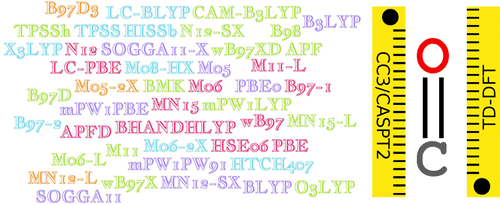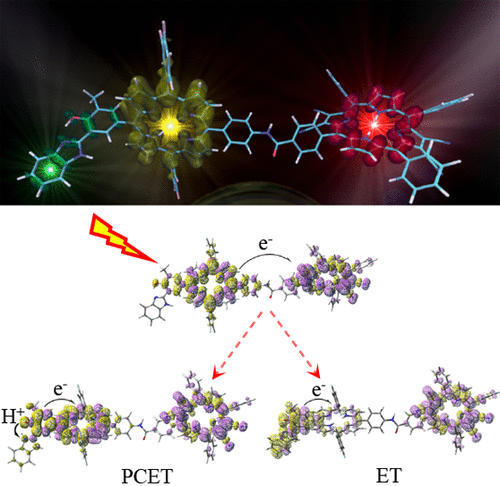Accuracy of TD-DFT Geometries: A Fresh Look
Journal of Chemical Theory and Computation 2018
DOI: 10.1021/acs.jctc.8b00311
We benchmark a panel of 48 DFT exchange–correlation functionals in the framework of TD-DFT optimizations of the geometry of valence singlet excited states. To this end, we use a set of 41 small- and medium-sized organic molecules for which reference geometries were obtained at high level of theory, typically, CC3 or CCSDR(3), with the aug-cc-pVTZ atomic basis set. For the ground-state parameters, the tested functionals provide average deviations that are small (0.010 Å and 0.5° for bond lengths and valence angles) and not very sensitive to the selected (hybrid) functional, but the errors are larger for the most polarized bonds (CO, CN, and so on). Nevertheless, DFT has a tendency to provide too compact distances, a trend slightly enhanced for functionals including a large amount of exact exchange. The average errors largely increase when going to the excited-state for most bond types, that is, TD-DFT delivers less accurate excited-state distances than DFT for ground state. In particular TD-DFT combined with hybrid functionals provides significantly too short CO and CS/CSe bonds with respective average errors in the −0.026/–0.052 Å and −0.015/–0.082 Å ranges, depending on the selected hybrid functional. For the carbonyl bonds, the sizes of the TD-DFT deviations obtained when selecting standard hybrid functionals are of the same order of magnitude as the EOM-CCSD ones.





